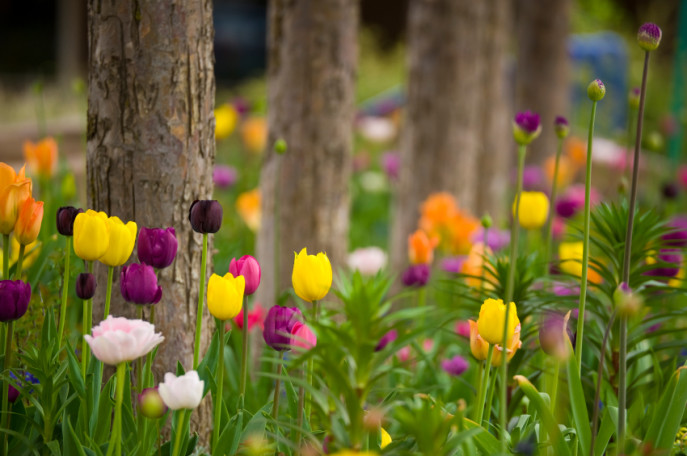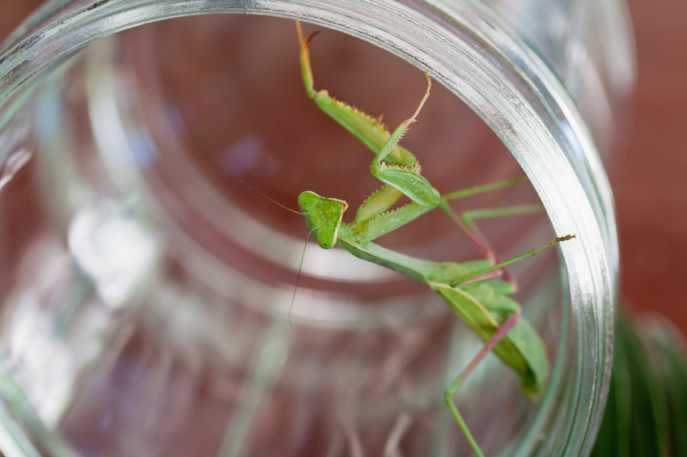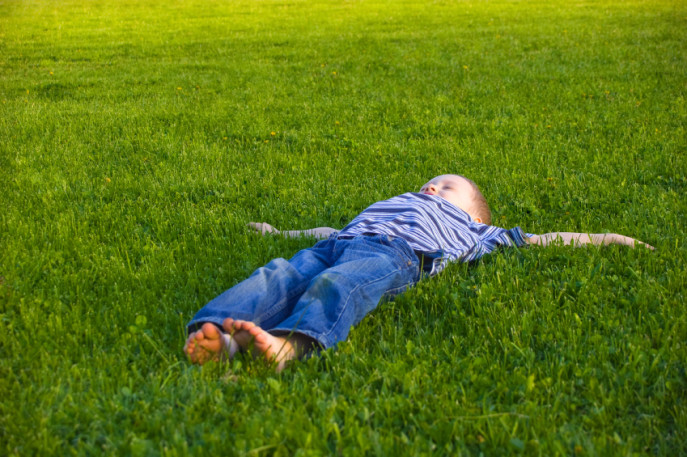
Spring is here, and another season of rebirth and growth is upon us. We have a new opportunity, as gardeners, as homeowners, and as earth’s citizens, to make choices that support life, down to the tiniest creatures. Although you may not see evidence of it every day, your garden is teeming with life: bees lazily buzzing from flower to flower, birds flitting through trees brimming with nests and berries, and rivers, streams and ponds in wetlands throughout the region you call home
To really see just how many creatures are part of your micro ecosystem, try this: Sink a clean glass jar, without its lid, into a hole in the ground, and leave it overnight. The next morning, walk outside and enjoy your coffee with the beetles and other little visitors who came to your garden while you slept. Each one is part of a delicate balance that exists in every square foot of your property.

Make Your Garden a Sanctuary
Lawn and garden chemicals are poisons to things that live, including humans and pets. They pollute our water, harm wildlife, and interrupt the delicate balance of our ecosystem. They may also be endocrine disruptors, interfering with the body’s hormonal system in both humans and wildlife. If you’re not part of the suburban quest for the perfect lawn, then your neighbors might be. Killing weeds and encouraging rapid growth of thick green grass may seem the natural thing to do, but nothing could be further from nature.
One hundred million pounds of lawn care chemicals are used by homeowners every year. These include chemicals that kill weeds, insects, and a variety of plant diseases. A study from the U.S. Center for Disease Control (CDC) found pesticides in 100% of the people who had both blood and urine tested. The average person carried 12 of the 23 pesticides they searched for. Many of these chemicals are linked to cancer, birth defects, and liver or kidney damage.
This Year, Garden Green
It’s possible to have a beautiful lawn and garden without resorting to dangerous and toxic chemicals. Make this year your “Garden Green” year.

Here’s how for the lawn:
- Healthy soil promotes healthy plants. This is your foundation for every other thing you do in the garden. How do you get healthy soil? Add organic compost. You can make your own, or buy it.
- Corn gluten is increasingly used as a high-nitrogen organic fertilizer. Organic fertilizers feed your lawn slowly; quick release chemical fertilizers encourage rapid growth that weakens the grass, promotes disease and leaches into nearby surface waters.
- Tolerate a few weeds. You can dig them out by hand if they bother you, or you can adopt the philosophy of “live and let live.” A few weeds can also provide a home for beneficial insects, which keep the overall landscape in good health.
- For the first and last mowing, mow down to two inches, which prevents fungus growth. For the rest of the year, keep our grass higher, at three inches, to shade out weeds and foster deep roots. Short grass promotes weeds, shallow roots and thatch.
Here’s how for the garden:
- Just like in your lawn, add organic material to your garden soil to make it healthier, and less likely to be a host to disease.
- Spread mulch (chopped leaves, shredded bark, compost) to smother weeds and keep soil moist.
- Put up birdhouses and bird feeders to encourage nature’s pest patrol to help with insect problems.
- Carefully choose plants that are suited to your year round temperatures, rainfall and amount of sun required. Look for disease resistant varieties of ornamental trees and roses.
- A diverse biosphere in the garden best mimics nature, and makes a stable ecosystem. Plant a mix of trees, shrubs, flowers and herbs.
- Remember that even organic chemicals and pesticides can cause damage if overused, so apply with care, and be sparing in their use!
A few other ideas to make your garden a home for wildlife and a pleasure for everyone:

- Instead of putting up fences, plant hedges. A hedge can provide food, shelter and a nursery for wildlife, including birds and butterflies. If you want a fool-proof way to bring butterflies to your garden, plant a butterfly bush (Buddleia davidii)! Monarch butterflies love the purple variety.
- Set up a wormery. If you have a compost system, add worms! You can buy a full kit, and they’ll eat virtually any organic kitchen waste. You’ll be making the best compost in the world. You might try Uncle Jim’s Worm Farm.
- Encourage other beneficial insects. Lady bugs that eat aphids can be purchased online (Gardens Alive offers lady beetles by mail) or, if you live in Connecticut, at Gilberties Herb Garden in Westport.
- If you have the space, you can even add a few chickens to provide your family with eggs. They enjoy foraging for garden insects, so they’re a benefit in two ways. Check out Backyard Chickens for more information!
Enjoy nature, and feel good about keeping your little piece of the earth safe and clean. Happy Spring!




